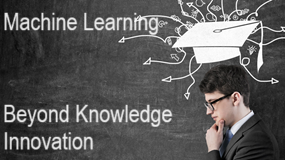KerasClassifier is a wrapper class provided by the Keras library that allows you to use a Keras neural network model as an estimator in scikit-learn workflows. This wrapper enables you to leverage the extensive functionality of scikit-learn, such as cross-validation, grid search, and pipelines, with Keras models seamlessly.
Here’s how KerasClassifier works:
- Integration with scikit-learn: By encapsulating a Keras model within a
KerasClassifierobject, you can use it just like any other scikit-learn estimator. This means you can use it in functions likecross_val_score,GridSearchCV,Pipeline, etc. - Compatibility with scikit-learn API:
KerasClassifieradheres to the scikit-learn estimator interface, which means it implements thefit,predict,score, and other methods expected by scikit-learn. This allows you to seamlessly integrate Keras models into your scikit-learn workflows without having to write custom code for compatibility. - Parameter Tuning: You can perform hyperparameter tuning using techniques such as grid search or random search with
KerasClassifier. This allows you to search over a grid of hyperparameters and find the optimal configuration for your Keras model.
Here’s a simple example of how to use KerasClassifier:
from keras.models import Sequential
from keras.layers import Dense
from keras.wrappers.scikit_learn import KerasClassifier
from sklearn.model_selection import cross_val_score
# Define a function to create the Keras model
def create_model():
model = Sequential()
model.add(Dense(12, input_dim=8, activation='relu'))
model.add(Dense(1, activation='sigmoid'))
model.compile(loss='binary_crossentropy', optimizer='adam', metrics=['accuracy'])
return model
# Create a KerasClassifier with the create_model function
model = KerasClassifier(build_fn=create_model, epochs=10, batch_size=10, verbose=0)
kfold = KFold(n_splits=10, shuffle=True)
# Evaluate the model using cross-validation
results = cross_val_score(model, X, y, cv=kfold)
#print(results.mean())
print("Baseline: %.2f%% (%.2f%%)" % (results.mean()*100, results.std()*100))
In this example, create_model defines a simple Keras model. We then create a KerasClassifier instance, passing the create_model function as the build_fn argument. Finally, we use cross_val_score to evaluate the model using 5-fold cross-validation.

